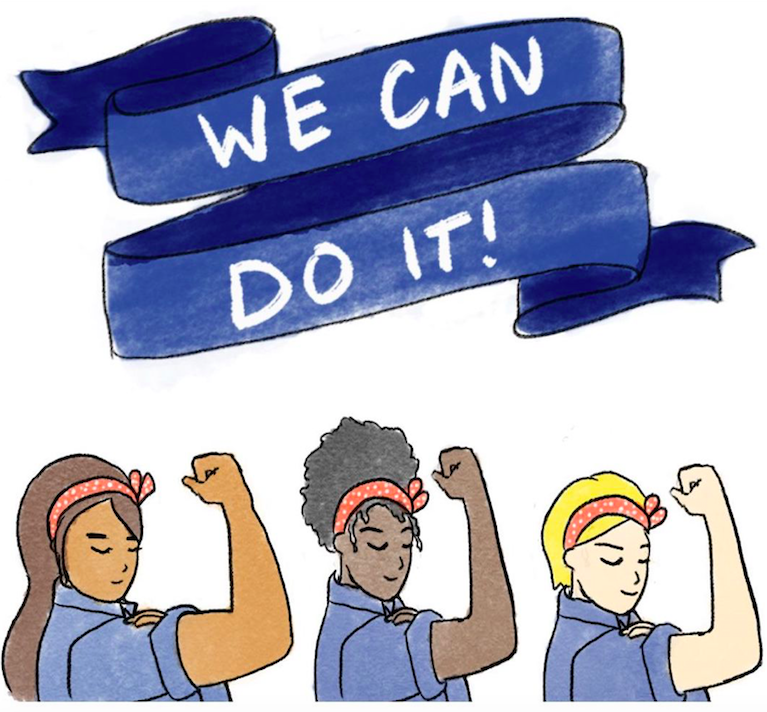“How will the fact of being women have affected our lives? What precise opportunities have been given us, and which ones have been denied? What destiny awaits our younger sisters, and in which direction should we point them?”
– Simone De Beauvoir, The Second Sex
Despite growing up in a family with an intense female presence and strength, it was only towards my late twenties that I truly started paying attention to the feminist movement. Don’t get me wrong; I always knew that “female” came with its “howevers”, but as I grew older, as I met women from different walks of life, I started realising what it truly meant to be a woman in our society. I began to grasp the harsh idea that all women share experiences that are not so pleasant and that the world can be, at times, really unfair.
The thing about inequality is that once you spot it in one place, it becomes increasingly difficult to stop spotting it everywhere else. Once you realise your desires, dreams, talents, sexuality, career and – well – life are all subjected to a different set of rules that only apply to half of the world’s population, it becomes really difficult not to feel angry. And I think we should feel angry.
To be a woman
Does not mean
To Wear
A shroud;
The Feminine
Is not
Dead
Nor is she
Sleeping
Angry, yes,
Seething, yes.
Biding her time;
Yes.
Yes.
– Alice Walker, To Be A Woman
With anger comes a desperate desire for change: to see it happen, to witness as it establishes, to be present when it finally becomes the norm. Our anger is fuel. Although the world is still not the most welcoming place for women, we continue to strive. So many intelligent, accomplished women in this world are saying “no” to the “nos” they’ve heard. We started marching towards tables we are not welcome at and claiming our seats. When seats were still being denied regardless of our efforts, we started building our own tables.
Last week an all-female team won the biggest hackathon in the world (they developed an app that can translate signboards to any language without the need for internet connection) in Saudi Arabia, and I felt proud. I felt proud because these girls are young, they are bright, and they are courageous. I felt proud because they fiercely snatched a seat that was never before offered to them. I felt proud because it feels like, even if it seems small in comparison with everything that still needs to change, we are taking up room in all tables. I felt proud because it is happening.
What about Design Thinking? Can it do anything to help us get more room?
Feminist writer Andrea Lyip wrote an essay entitled The Gendered Design Thinker, in which she says:
“In learning more about design herstory, I have found myself reading literature that I was first introduced to in my undergraduate women’s studies classes about feminist critiques of design. Much of this critical discussion (see Design and Feminism) focuses on the relationship between women and the built environment: How built spaces have and continue to be the embodiment of a patriarchal agenda, spatially (mentally, emotionally, and physically) segregating women and men into their respective private and public domains. Within this context, “pink ghettos”, the “feminisation of poverty”, and urban design as monuments to male domination, money and power are common points of analysis. Moreover, a feminist perspective on design highlights the need for women to be fully integrated into the mainstream design agenda and better represented within the profession itself. As a predominantly male-dominated field, there have been calls for better documentation and heightened visibility of female designers and their rich contributions to the field.
This of course is just a sliver of insight into design herstory, but hopefully gives you a sense of what I’ve been reading and the type of content that I have found to be predominant in the literature. Generally speaking though, it has been a challenge to find discussion around the overall female experience in design, and how gender and identity play into design process and design thinking.”
What I take from the point she is trying to make is this: if Design Thinking teaches us to leave our biases behind, to empathise, to change the status quo – and, for so long now, women being treated as lesser people have been the status quo – we need to use the process to change the gender disparity, we must use Design Thinking and everything else in our power to allow the mindset shift that will give us fair representation.
I started this article with Simone De Beauvoir’s question, and with it, I may conclude it: “What destiny awaits our younger sisters, and in which direction should we point them?”
We should point them ahead, as it is the only way to go.
Women like you, Simone, have paved the way for us so that we can stand here; so that we can walk up to the table. You’ve done it so far; now it is our turn.
We should also tell the girls that if anyone can do it, they can. Women have been doing it all along and with a lot less space to stretch. We should tell them – because they deserve to know – that those seats at those tables belong to them as much as to the next person so, frankly, they should grab them.
It’s also essential to remind them that they should always make room for the girls coming after them, and for the women that these girls will one day become. We should say, finally, that their destiny is bright and that they have the power to design whatever future they want for themselves.
In a society where there is still so much confusion about what being a feminist means, we should tirelessly clarify that one’s rights nothing have to do with one’s gender. Enough is enough; no more.
We’re it, just like you, we’re the people.
—
If you’d like to start an innovation journey in your company, you can check out our in-house course offering as well as download for free our Design Thinking toolkit by clicking here.
If you’d like to see what are the upcoming courses in your region, visit our website.
If you have a special project and would like to use Echos’ consultancy services, you can send us an email.




